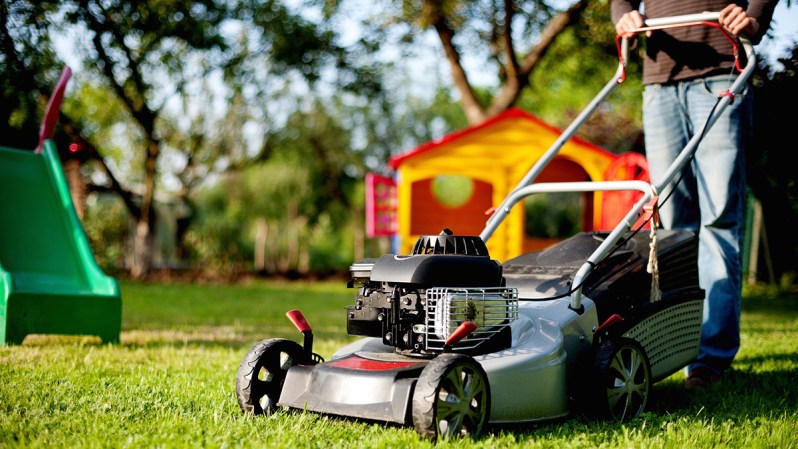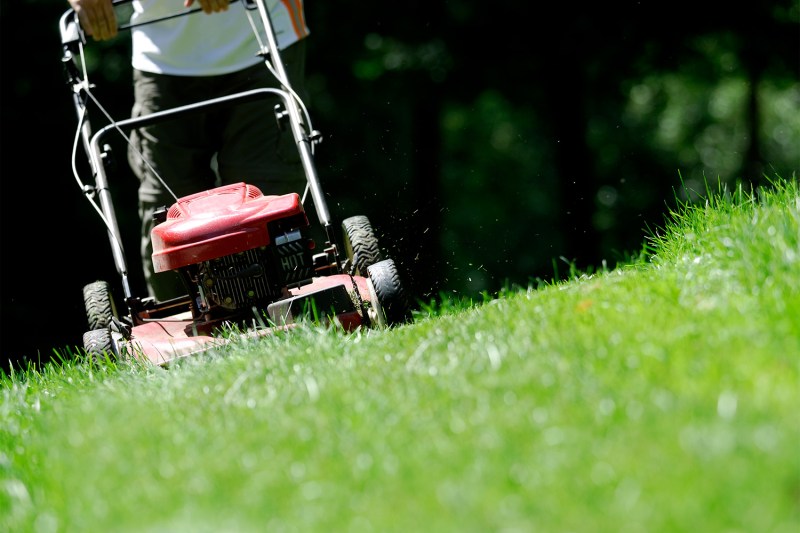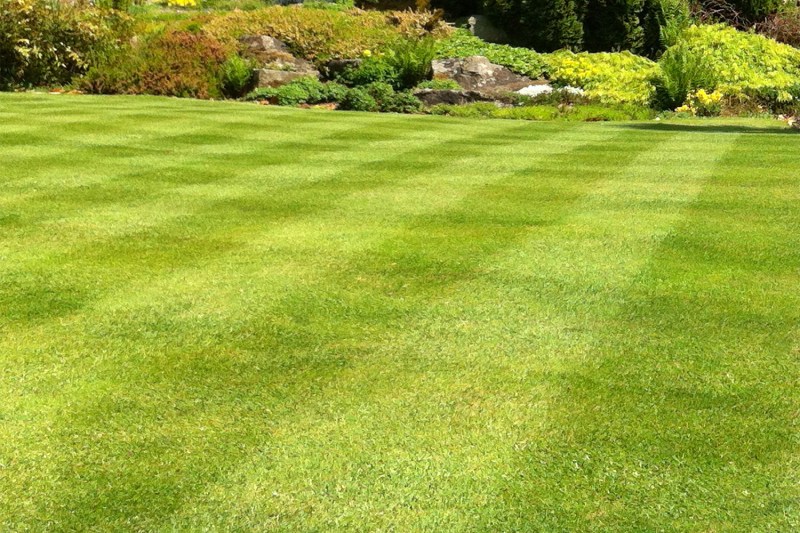
A well-manicured lawn is a point of pride for many a man, and all the more so if he mows and tends the property himself. Those who don’t understand why need not be addressed; the burden of proof is on the non-lawn guy, not on the man who appreciates fine, healthy grass. (Now for the record, if you prefer another type of landscaping such as a drought-friendly rockscape, that’s more than acceptable, too, especially if you live in a dry area.)
Mowing the lawn is one of the finest things a man can do. It’s a project you can start and finish in a single morning or afternoon, complete with edging and cleanup (and a few beers, of course). To keep things simple, this article is going to focus on the standard push-behind motor-powered lawnmower. That can be an electric mower or a good ol’ gasoline-fueled unit. If your property is large enough to require a riding mower, you probably don’t need this 101 level of a primer. And if you live on a property so large that you couldn’t mow it yourself in a single morning or afternoon even with a larger mower, then you enjoy that, Mister.
The Basics of Mowing
Know your mower
Take the time to learn where the spark plug is, how much oil the engine needs, and how many pumps will properly prime the mower. Set the handle to a comfortable height and learn its throttle settings, if applicable. Hell, read the manual if you want (heh). Just make sure you fully understand how to operate the specific mower you’ll be using, even if you already know your way around lawn mowers.
Always mow your lawn when the grass is dry
Dry grass stands upright and will allow for a more even cut. It also won’t clump up inside and/or weigh down your mower as much as wet grass, and if you’re using a mulching mower, the grass will be distributed evenly. So make sure you wait a few hours after your lawn sprinkler runs.
Never remove more than 30% of the grass’s length
For example, if you have a yard with grass that’s six inches tall, take off two inches at the most. If your yard is overgrown, mowing it down to a respectable height may require you to mow some off the top one day, to wait several days, then to mow down to the height you want — if you chop too much of the blade off, you risk removing too many nutrients and reducing the yard’s capacity for photosynthesis. Not even fertilizer can help at that point.
Keep the blades sharp
For ideal mowing, you should sharpen the blades of your mower at least three times a week. Just kidding, that’s probably obsessive. How about once a year? Can you do that? That should do it. If you can bring yourself to have the blades sharpened twice a year, so much the better. This process should cost you less than $20.
Advanced Techniques
Mowing Hills and Slopes

Careful, now, hills and big sharp spinning blades don’t go well together. As long as you make sure that whirling blade is never uphill from you, though, you should be fine. Mow across the hill from side to side if you can, or move up and across the hill at a diagonal. Take the time to turn the mower off and retrace the swath you cut as you head back downhill: safety is more important than efficiency (not by much, but it is). Also consider wearing cleats if the hill is steep enough, and if it’s much more than a one foot rise for three feet of horizontal length, it may be too steep to safely mow; in this case, get yourself a goat.
Striping the Lawn
If you want to achieve the dramatic striped look you see on professional ball fields, then all you need is a few extra minutes when you mow the yard. First simply pick the direction the striping will run, then mow the yard alternating the direction of each pass as per your plan with the mower set at or near its highest setting. Then turn your mower off and move it down to its very lowest setting. Now walk each stripe again, following the same path you did while mowing. That should bend the grass low enough to enhance the contrast between each stripe. If not, go get yourself a lawn roller. And yes, stripes require regular mowing. But this is your yard, man, it’s worth it!
Change Up That Pattern

If you cut diagonal lines across your yard last time (and you’re not into permanent striping), opt for stripes running in a different angle today. This will avoid packing down the soil and will encourage the grass to grow robust and straight.
Raise the Blades Under Trees
Any area of your yard that is usually in the shade should be mowed at a higher setting than areas consistently in the sun. You probably already figured this out, but that’s so because these areas get less sunshine, i.e. less plant food, and therefore grow slower than the exposed areas.
Disposing of the Grass
If you have the space, leaving your grass clippings in low, flat piles will let it dry out and turn into great mulch. If you don’t have space (or you just don’t want to use clippings to nourish a vegetable garden) it’s best to use brown paper lawn trimming bags to dispose of your grass, as these will let the clipped grass dry out, making it easier to move, and will eventually break down in that landfill where your grass is likely headed.



